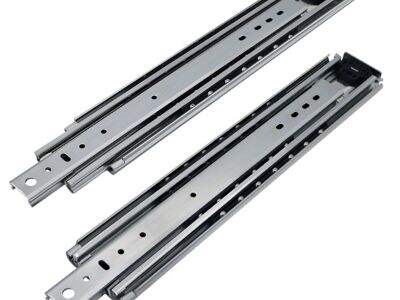Before you pull the trigger on adding ball bearing runners to your toolbox, some critical factors should be taken into account. Please be sure to take fastidious measurements of the dimensions of your toolbox before actually mounting the ball bearing runners. This helps to make them fit correctly and operate better.
What to Check Before Installing Ball Bearing Runners in Toolboxes?
The second point to look at is the weight of the ball bearing runners. You also need to ensure they are strong enough to hold your tools and will not break or stop working. If the ball bearing drawer runners are not capable of carrying the weight, they will either not operate correctly and may even damage your toolbox.
Adjust or replace
Once you have ensured the weight capacity, you should also check the ball bearing runners. The next thing you should do is open and close the drawer regularly till it smooths out. Your heavy duty runners are stiff and squeaky
Ensuring the runners are mounted in place is another crucial bit of the process.
Nevertheless, if the runners are loose or shaky, they might not offer the stability which you require from your tools. This may cause some accidents or breaks to your tools. Ensure correctly stable and operational runners
Lastly, make sure that the ball bearing runners fit the material of your toolbox. Metal toolboxes make more sense for some of the runners, while plastic or wood work best with others. Failure to use the proper type of runners will result in damage to your toolbox or simply malfunction.
Conclusion
By completing these steps carefully, you will be more likely to ensure your new ball bearing runners get installed correctly and work well in your toolbox. Always measure first and get the correct size, check the weight limit, test the slides, mount them securely on your toolbox material. These safety features will serve to keep your toolbox in order and a viable working unit, allowing the easier way out for more flexible use of work.


